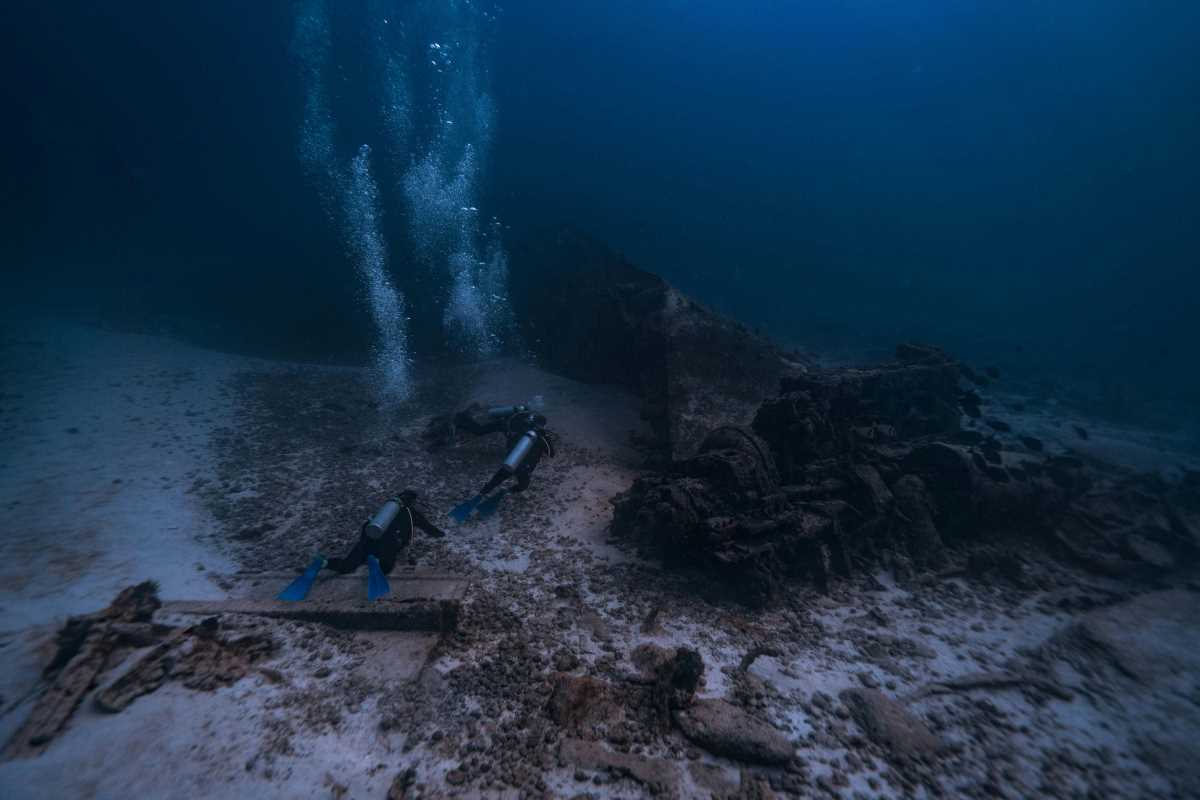Exploring underwater caves is an adventure unlike any other. The thought of venturing into mysterious passageways surrounded by stunning rock formations and marine life is enough to excite any diver. Yet it’s also a type of diving that requires preparation, skill, and caution, especially for those new to the sport. Cave environments can be challenging, but with the right approach, even beginner divers can have a safe and rewarding experience.
This guide is packed with practical tips for beginner divers eager to take their first steps toward underwater cave exploration. Learn how to prepare, improve your skills, and stay safe throughout your adventure. With a little planning and the right mindset, you’ll be ready to take on one of the most breathtaking challenges in the underwater world.
Get Proper Training
Starting your cave-diving adventure requires more than just your basic Open Water certification. Special training is essential to handle the unique challenges of underwater caves. Look into courses like the Cavern Diver or Intro to Cave Diver certifications, offered by reputable agencies such as PADI or NAUI. These classes teach you crucial skills, including proper buoyancy control, navigation, air management, and safety protocols.
Training also covers how to handle potential risks, like silt-outs (when sand or sediment clouds the water) or equipment malfunctions. The lessons and hands-on practice you’ll receive will prepare you for real-world scenarios and boost your confidence. Diving in caves without the appropriate certification is risky and could turn a fun adventure into a dangerous situation.
Start Small
Choosing the right cave for your first experience is key to building confidence. Look for shallow caves or caverns with simple layouts that don’t extend too far from the entrance. Caverns, unlike full-on caves, often still allow you to see natural light, which can make first-time divers feel much more comfortable.
Caves with clear waters and minimal currents are ideal for beginners. The lighting and visibility in these environments make it easier to find your bearings and stay calm as you get accustomed to the thrill of cave exploration. Once you’re comfortable with smaller spaces, you can gradually move on to more challenging caves with experienced guides.
Master Your Buoyancy
Controlling your buoyancy is absolutely essential in underwater cave environments. Unlike open water, caves are confined spaces. Poor buoyancy could lead to kicking up sediment, damaging fragile structures, or even causing injury.
Practice maintaining neutral buoyancy during your training dives and focus on slow, deliberate movements. A helpful trick is to keep your breathing steady since sudden changes in your breathing pattern can affect how you float in the water. Streams of bubbles hitting the ceiling can disrupt the environment, so learning to breathe calmly is not just about conserving air but also about preserving the beauty around you.
Choose the Right Equipment
Relying on appropriate gear can make all the difference. Lightweight and streamlined equipment is highly recommended, as bulky setups could make it hard to maneuver through narrow spaces. Many cave divers use a back-mount or side-mount configuration, which helps distribute weight better and keeps gear out of the way in tight areas. This setup also increases safety by providing more visibility of your equipment.
Carrying at least two lights is an absolute must. Caves can be dark, and having reliable lighting ensures you can always see where you’re going. Redundancy is crucial in all equipment, especially lights, as running out of power in a cave is not an option.
Practice Line-Handling Skills
Guideline mastery is one of the cornerstones of cave-diving safety. A guideline is a thin rope or reel that helps you find your way back to the cave’s entrance, even in poor visibility. During training, practice laying and following a line until it feels like second nature. Keeping one hand on the line at all times ensures you won’t lose your way, even if the water gets murky.
Pay attention to how the line is tied and secured. Correctly placing the line while being mindful of the cave environment requires practice and patience, but it is critical for your safety.
Never Go Alone
Cave exploration is not an activity for solo divers, especially beginners. Always bring a buddy or join a group with an experienced cave diver leading the way. Diving with a mentor or guide is invaluable when you're still learning the ropes. They can help manage risks, offer advice on technique, and ensure you stick to a safety-first approach.
Communication is another crucial aspect of buddy systems. Learn and practice hand signals specific to cave environments, including signals for low air or a loss of light. Staying close to your buddy ensures you can support each other if something goes wrong.
Plan and Stick to Your Limits
Cave-diving adventures should always begin with a clear and detailed plan. Decide how far you will go into the cave, how long you’ll spend underwater, and when to turn back based on your air supply.
The "rule of thirds" is a popular guideline among cave divers. It dictates that one-third of your air supply is for entering the cave, one-third for exiting, and one-third for emergencies. Sticking to this rule ensures you always have enough air to get back safely.
Resist any temptation to push beyond your skill level or stray from the plan, even if it means cutting your exploration short. Being conservative with your limits ensures your safety and builds the foundation for future dives.
Maintain Situational Awareness
Divers often hear the term “situational awareness,” which simply means being aware of your surroundings and maintaining focus. Pay close attention to your position in the cave, your air pressure, and your buddy’s location.
It can be easy to get distracted by the awe-inspiring visuals around you, but losing track of time, air, or the guideline can quickly lead to trouble. Regularly check your gauges and lights, and make it a habit to communicate with your buddy. Staying alert makes for a stress-free and enjoyable adventure.
Respect the Environment
Underwater caves are delicate ecosystems. Many are home to rare species of fish, unique marine environments, and rock formations that have taken thousands of years to form. Always avoid touching or disturbing the environment around you.
Avoid kicking up sediment by using smaller, controlled fin movements, such as the frog kick. Follow your guide’s instructions about handling fragile areas, and never remove or damage artifacts or elements of the cave. Responsible exploration ensures that these ecosystems remain pristine for future divers.
Visualize and Stay Calm
Feeling nervous before your first cave dive is completely normal. Visualizing the experience ahead of time can help reduce anxiety. Picture yourself entering the water, following the guidelines, and staying calm during the exploration.
Keeping a clear head underwater is just as important. Should you encounter unexpected situations, such as poor visibility or equipment issues, don’t panic. Rely on your training, follow your buddy’s lead, and take slow, deep breaths to stay in control. Calm decision-making is key to resolving problems effectively.
Build Experience Over Time
Progressing in cave-diving skills takes time. Each new experience you gain adds to your confidence and improves your skill set. Start with simple environments, work on your mastery of techniques, and slowly move into more complex caves under the guidance of experienced professionals.
Gradual improvement ensures that your skills match the challenge and gives you the confidence to enjoy each new adventure to the fullest. Diving is all about learning with every new challenge, so savor each milestone along the way.
 (Image via
(Image via





